Related Research Articles

Fortified wine is a wine to which a distilled spirit, usually brandy, has been added. In the course of some centuries, winemakers have developed many different styles of fortified wine, including port, sherry, madeira, Marsala, Commandaria wine, and the aromatised wine vermouth.

Madeira, officially the Autonomous Region of Madeira, is an autonomous region of Portugal. It is an archipelago situated in the North Atlantic Ocean, in the region of Macaronesia, just under 400 kilometres (250 mi) north of the Canary Islands and 520 kilometres (320 mi) west of the Kingdom of Morocco. Madeira sits on the African Tectonic Plate, although it is culturally, politically and ethnically associated with Europe, with its population predominantly descended from Portuguese settlers. Its population was 251,060 in 2021. The capital of Madeira is Funchal, on the main island's south coast.
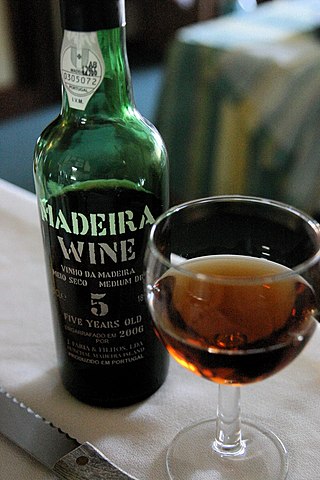
Madeira is a fortified wine made on the Portuguese Madeira Islands, off the coast of Africa. Madeira is produced in a variety of styles ranging from dry wines which can be consumed on their own, as an apéritif, to sweet wines usually consumed with dessert. Cheaper cooking versions are often flavoured with salt and pepper for use in cooking, but these are not fit for consumption as a beverage.

Malvasia, also known as Malvazia, is a group of wine grape varieties grown historically in the Mediterranean region, Balearic Islands, Canary Islands and the island of Madeira, but now grown in many of the winemaking regions of the world. In the past, the names Malvasia, Malvazia, and Malmsey have been used interchangeably for Malvasia-based wines; however, in modern oenology, "Malmsey" is now used almost exclusively for a sweet variety of Madeira wine made from the Malvasia grape. Grape varieties in this family include Malvasia bianca, Malvasia di Schierano, Malvasia negra, Malvasia nera, Malvasia nera di Brindisi, Malvasia di Candia aromatica, Malvasia odorosissima, and a number of other varieties.

Funchal is the capital, largest city and the municipal seat of Portugal's Autonomous Region of Madeira, bordered by the Atlantic Ocean. The city has a population of 105,795, making it the sixth largest city in Portugal. Because of its high cultural and historical value, Funchal is one of Portugal's main tourist attractions; it is also popular as a destination for New Year's Eve, and it is the leading Portuguese port on cruise liner dockings.

Solera is a process for aging liquids such as wine, beer, vinegar, and brandy, by fractional blending in such a way that the finished product is a mixture of ages, with the average age gradually increasing as the process continues over many years. The purpose of this labor-intensive process is the maintenance of a reliable style and quality of the beverage over time. Solera means "on the ground" in Spanish, and it refers to the lower level of the set of barrels or other containers used in the process; the liquid is traditionally transferred from barrel to barrel, top to bottom, the oldest mixtures being in the barrel right "on the ground". The containers in today's process are not necessarily stacked physically in this way but merely carefully labeled. Products which are often solera aged include Sherry, Madeira, Lillet, Port wine, Marsala, Mavrodafni, Muscat, and Muscadelle wines; Balsamic, Commandaria, some Vins doux naturels, and Sherry vinegars; Brandy de Jerez; beer; rums; and whiskies. Since the origin of this process is the Iberian peninsula, most of the traditional terminology is in Spanish and Portuguese.
Finishing is the procedure that some whiskies undergo where the spirit is matured in a cask of a particular origin and then spends time in a cask of different origin Typically, the first cask is an American oak cask formerly used to mature bourbon. The second cask may be one that has been used to mature some sort of fortified wine, often sherry, though sometimes casks for port, madeira, or even red burgundy or chardonnay are used.

The oldest known book on Portuguese cuisine, entitled Livro de Cozinha da Infanta D. Maria de Portugal, from the 16th century, describes many popular dishes of meat, fish, poultry and others.

Kosher wine is wine that is produced in accordance with halakha, and more specifically kashrut, such that Jews will be permitted to pronounce blessings over and drink it. This is an important issue, since wine is used in several Jewish ceremonies, especially those of Kiddush.
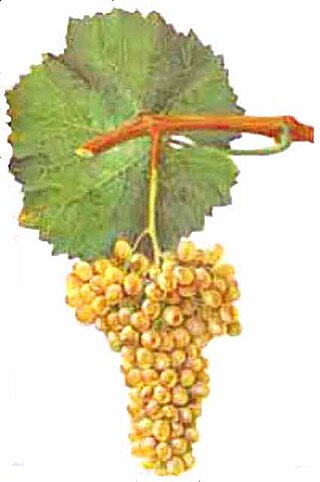
Verdelho is a white wine grape grown throughout Portugal, though most associated with the island of Madeira, and also gives its name to one of the four main types of Madeira wine. At the turn of the 20th century it was the most widely planted white grape in Madeira.
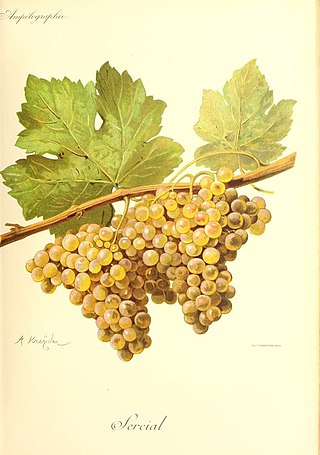
Sercial is the name of a white grape grown in Portugal, especially on the island of Madeira. It has given name to the dryest of the four classic varieties of Madeira fortified wine.

Portuguese wine was mostly introduced by the Romans and other ancient Mediterranean peoples who traded with local coastal populations, mainly in the South. In pre-Roman Gallaecia-Lusitania times, the native peoples only drank beer and were unfamiliar with wine production. Portugal started to export its wines to Rome during the Roman Empire. Modern exports developed with trade to England after the Methuen Treaty in 1703. From this commerce a wide variety of wines started to be grown in Portugal. In 1758, one of the first wine-producing regions of the world, the Região Demarcada do Douro was created under the orientation of Marquis of Pombal, in the Douro Valley. Portugal has two wine-producing regions protected by UNESCO as World Heritage: the Douro Valley Wine Region and Pico Island Wine Region. Portugal has a big variety of local kinds, producing a very wide variety of different wines with distinctive personality.
A wine fault is a sensory-associated (organoleptic) characteristic of a wine that is unpleasant, and may include elements of taste, smell, or appearance, elements that may arise from a "chemical or a microbial origin", where particular sensory experiences might arise from more than one wine fault. Wine faults may result from poor winemaking practices or storage conditions that lead to wine spoilage.

The history of Madeira begins with the discovery of the islands by Portugal in 1419. There is no record of anyone living on the islands at that time. Portugal began populating the island in 1420.

Sparkling wine production is the method of winemaking used to produce sparkling wine. The oldest known production of sparkling wine took place in 1531 with the ancestral method.

The aging of wine is potentially able to improve the quality of wine. This distinguishes wine from most other consumable goods. While wine is perishable and capable of deteriorating, complex chemical reactions involving a wine's sugars, acids and phenolic compounds can alter the aroma, color, mouthfeel and taste of the wine in a way that may be more pleasing to the taster. The ability of a wine to age is influenced by many factors including grape variety, vintage, viticultural practices, wine region and winemaking style. The condition that the wine is kept in after bottling can also influence how well a wine ages and may require significant time and financial investment. The quality of an aged wine varies significantly bottle-by-bottle, depending on the conditions under which it was stored, and the condition of the bottle and cork, and thus it is said that rather than good old vintages, there are good old bottles. There is a significant mystique around the aging of wine, as its chemistry was not understood for a long time, and old wines are often sold for extraordinary prices. However, the vast majority of wine is not aged, and even wine that is aged is rarely aged for long; it is estimated that 90% of wine is meant to be consumed within a year of production, and 99% of wine within 5 years.
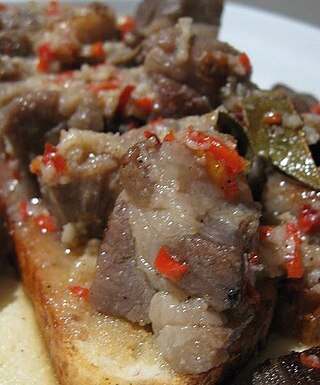
Carne de vinha d'alhos is a Portuguese dish prepared using a marinade of salt, paprika, chili paste, wine or vinegar, and garlic. Originating in Minho, it is traditionally served at Christmas time in Madeira.
This glossary of winemaking terms lists some of terms and definitions involved in making wine, fruit wine, and mead.
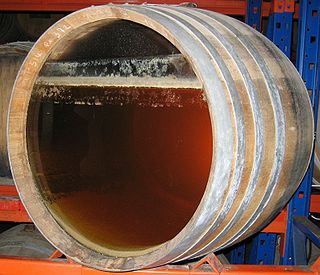
Ullage is a winemaking term that has several meanings but most commonly refers to the headspace of air between wine and the top of the container holding the wine. It can also refer to the process of evaporation that creates the headspace itself or it can be used as a past tense verb to describe a wine barrel or bottle that has gone through the evaporation process. The headspace of air is a mixture mostly of alcohol and water vapors with carbon dioxide that is a by-product of the fermentation process. In containers that are not completely air-tight, oxygen can also seep into this space. While some oxygen is beneficial to the aging process of wine, excessive amounts can lead to oxidation and other various wine faults. This is why wine in the barrels is regularly "topped up" and refilled to the top with wine in order to minimize the head space. In the bottle, the ullage or "fill level" of the wine can be an important indicator of the kind of care and storage conditions that the wine was kept in. After-market resellers and wine auction houses will often inspect the ullage levels of older vintages to determine the potential quality and value of wine.
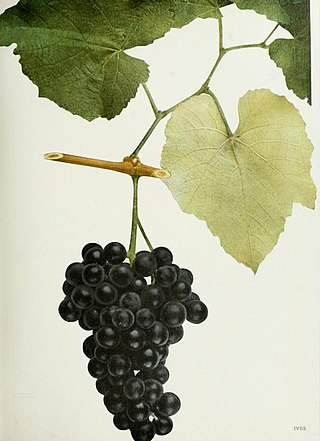
Ives noir is a red hybrid grape variety that is grown throughout the United States. Named after its propagator, Connecticut wine grower Henry Ives, the grape's pedigree and exact origin are unclear. After Prohibition in the United States, Ives was a popular grape used in the production of sweet port-style wines but saw its plantings steadily decrease throughout the 20th century as the vine's susceptibility to air pollution took its toll.
References
- ↑ LaVilla, Joe (22 April 2009). The Wine, Beer, and Spirits Handbook. Wiley. p. 421. ISBN 9780470429938 . Retrieved 3 April 2023.